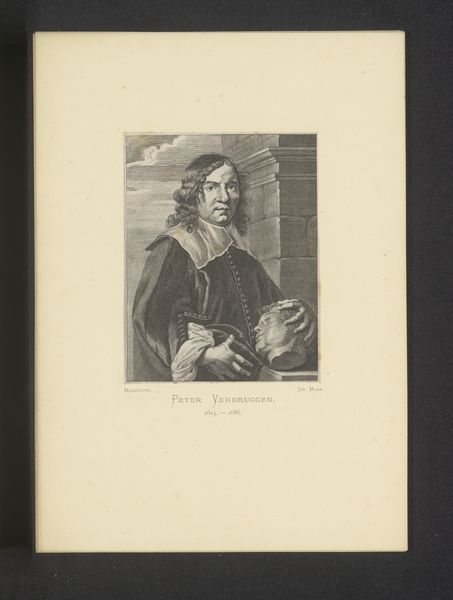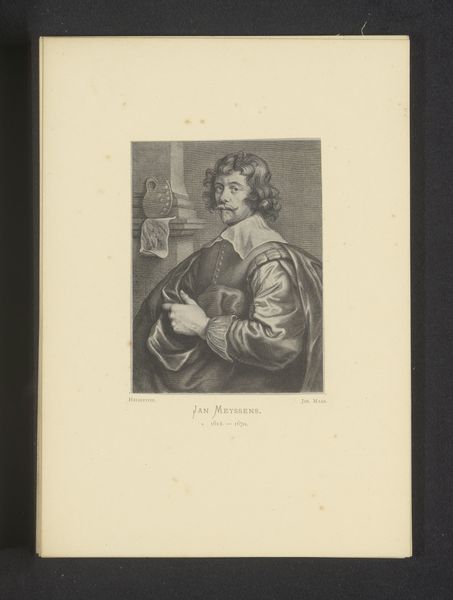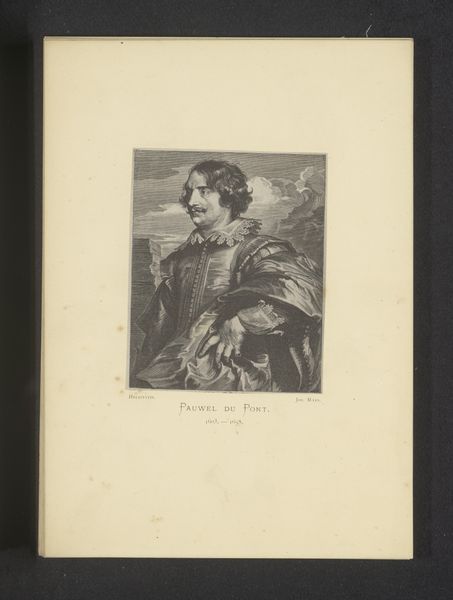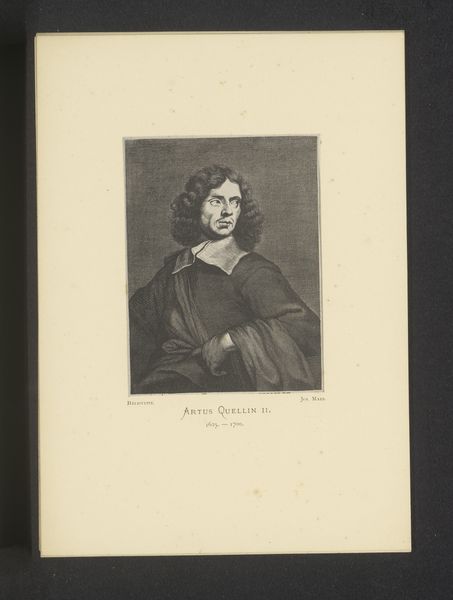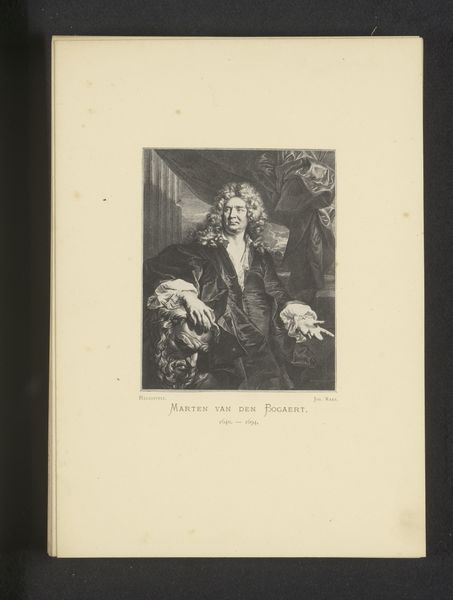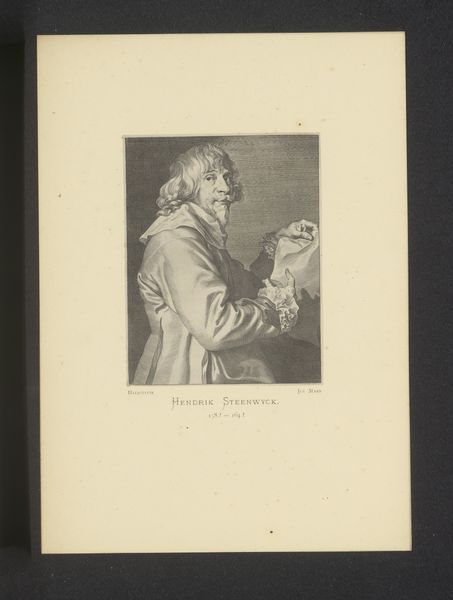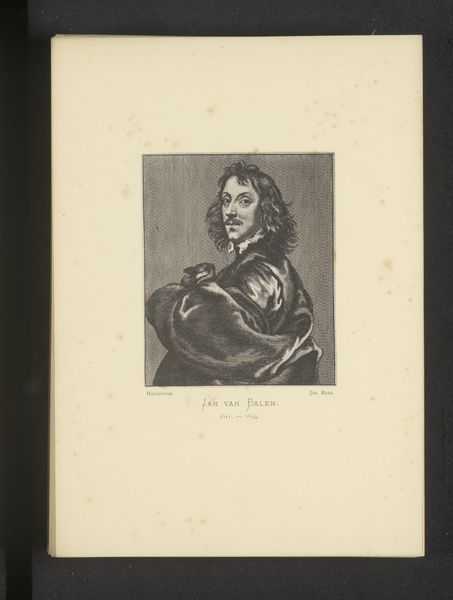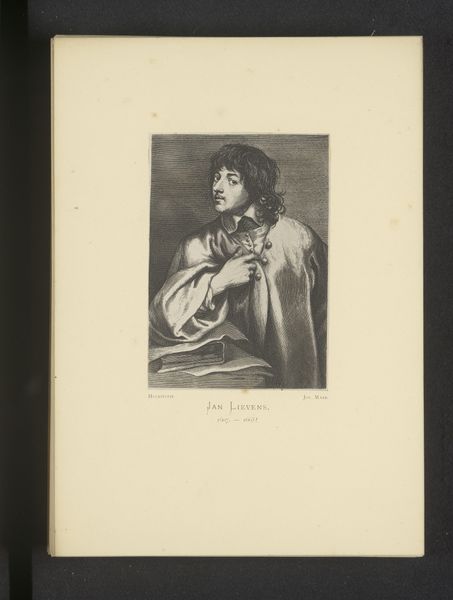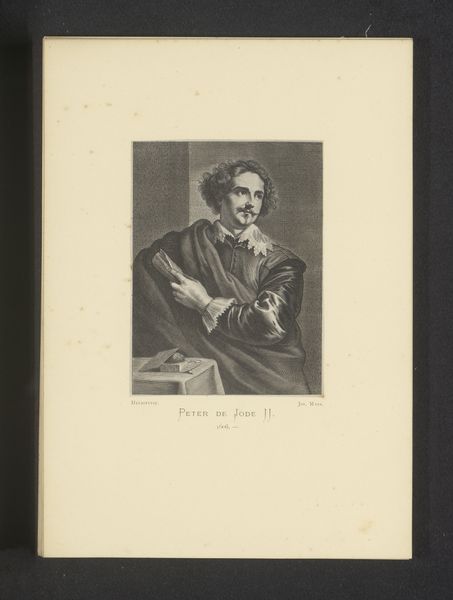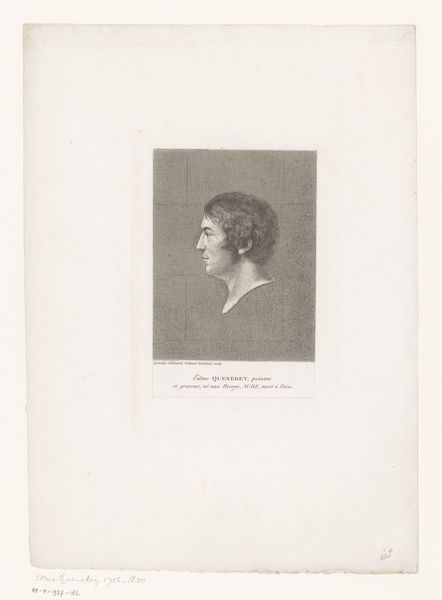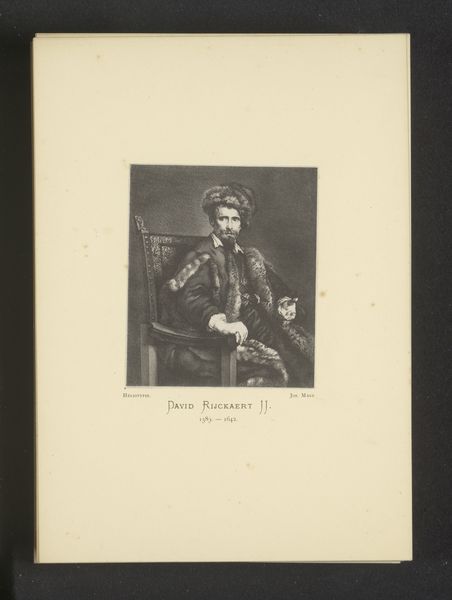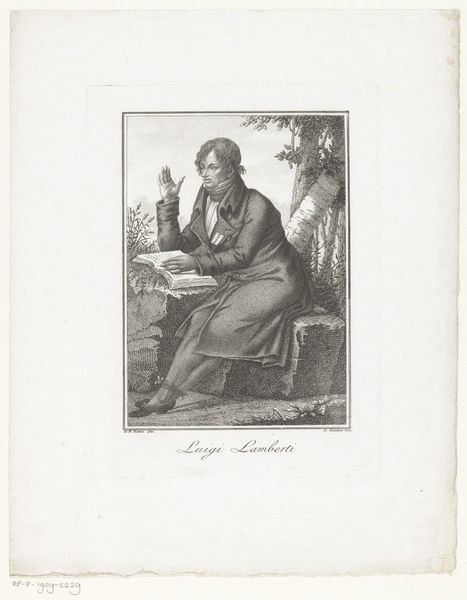
Reproductie van een gravure van een portret van Robert van den Hoecke door Cornelis van Caukercken before 1877
0:00
0:00
Dimensions: height 117 mm, width 88 mm
Copyright: Rijks Museum: Open Domain
Curator: Here we have a reproduction of an engraving—its creation predates 1877—portraying Robert van den Hoecke. The engraving itself was the work of Cornelis van Caukercken, after a portrait by Joseph Maes. Editor: Ah, a portrait of an artist! There's a thoughtful mood to this piece. Van den Hoecke appears so... contained. Holding a palette, displaying his art—a carefully presented self-image, I imagine. It's the kind of controlled representation you'd expect in a portrait made by someone else. Curator: The baroque style is certainly evident, particularly in the dynamism implied by the posture and the intricate detail rendered in the engraving. These portraits often served to elevate the subject. Robert van den Hoecke was not just any painter, but a military engineer and master of the mint, indicating status through symbolic representation. Editor: It makes you wonder, doesn’t it? What he thought of *this* image. Artists rarely look the way they believe they should be seen by others, it's so performative! But there's that glint in his eyes, that suggestion of something clever at work behind them. It saves it from becoming just another example of 17th-century portraiture pomp. Curator: Notice how the tools of his artistry—palette, brushes, even the hinted landscape he holds—contribute to our understanding. These weren't merely decorative, they are integral elements meant to communicate identity and social position to its contemporary viewers, emphasizing Van den Hoecke's cultural significance. Editor: Right. Each prop says, "I'm an intellectual, a creator of realities." There's that beautiful light on his face that seems more than what he has probably seen in life, as if it symbolizes creativity illuminating his mind. Do you think it accurately reflects him? Curator: Accuracy wasn't necessarily the sole aim, as you pointed out, and is always mediated, however there are always other objectives, of power and status, at work within a given cultural framework of representation, even an ostensibly neutral historical recording! Editor: I suppose. It is like the sitter performing himself. Food for thought, definitely.
Comments
No comments
Be the first to comment and join the conversation on the ultimate creative platform.
